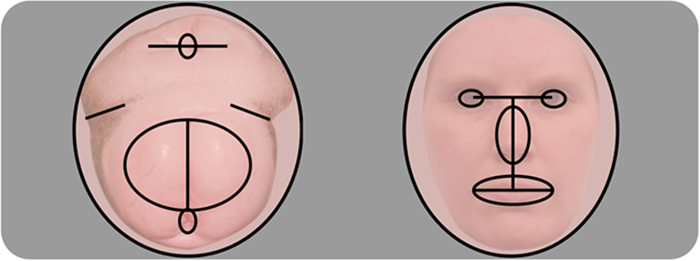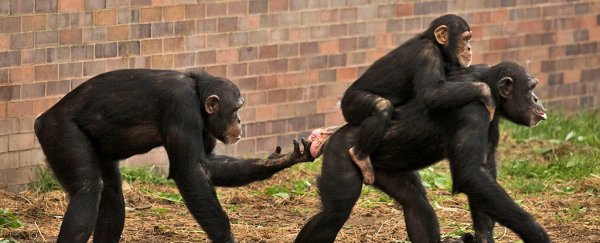Scientists studying chimp behaviour say the animals use the same process to identify a pair of buttocks as we do to identify a face - and they think the evolution of the two body parts is closely linked.
Chimpanzees weigh up other apes' identity, attractiveness, and health through their rear ends, the researchers say, and while we might not think our human faces have anything to do with chimp butts, the science suggests otherwise.
Researchers from Leiden University in the Netherlands and Kyoto University in Japan say the human face "shares important features with the primate behind", which is certainly one way of insulting someone you don't like - and indeed our whole species.
So what are the parellels? Well, chimp butts and human faces are always on show, for a start, and they're both symmetrical, which helps in attracting a mate, as symmetrical objects make it easier for us to visually process and remember them later on.
Plus they both can change colour to give off social signals - when female chimps ovulate, and when humans are embarrassed.
 Butt and face similarities. Credit: PLOS ONE
Butt and face similarities. Credit: PLOS ONE
The team also suggests that both human faces and chimp butts have evolved to help us recognise one another, with features optimally arranged for quick identification, such as a minimal amount of hair to help keep the skin, its contours, and colours on show.
As part of the research, five chimps were repeatedly shown single images of faces, butts, and feet on a computer screen, with the images being displayed the right way up and upside down.
The single images were then replaced by two images - one being the image earlier shown - and the animals were asked to spot the match from the first slide.
In the testing, the correctly orientated bottoms were identified more quickly than faces, feet, or upside-down butts.
"This is a good indication that this category has priority over other categories of objects," says neuropsychologist Mariska Kret from Leiden University.
And humans are similar: we recognise faces more easily when they're the right way up, but don't have as much trouble with other objects when they're flipped, like houses and cars. This phenomenon is known as the face inversion effect.
"We see faces so often and almost always upright that our brains have created a shortcut so that this category of images is recognised more efficiently and faster, but this only works if they are upright," says Kret.
In other words, chimps look for butts in a crowd the way we look for faces in a crowd.
As for similarities between chimp bottoms and human faces, the scientists say that over time, humans might have evolved from identifying each other through butts to identifying people through faces.
"The present study demonstrates that chimpanzees, unlike humans, show a 'behind inversion effect' and suggests that identity recognition 'moved up' from the bottom to the face in our uprightly walking species," the researchers write in their paper.
What's more, our faces may have evolved to be more butt-like and so easier to recognise, the researchers say.
But for now, that's only an hypothesis, so don't judge yourself in the mirror too harshly just yet.
The findings are reported in PLOS ONE.
